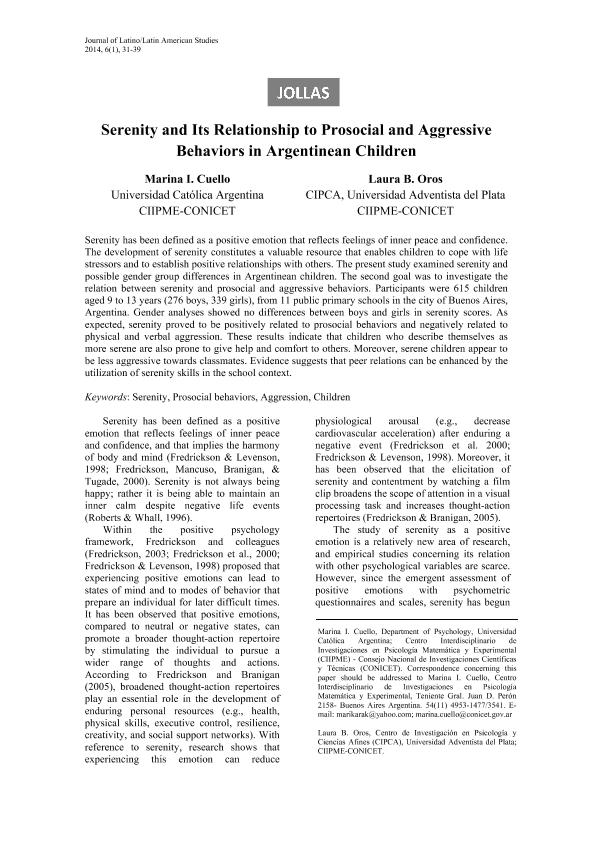Artículo
Serenity and its relationship to prosocial and aggressive behaviors in Argentinean children
Fecha de publicación:
04/2014
Editorial:
University of Nebraska Omaha
Revista:
Journal of Latino/Latin American Studies
ISSN:
1549-9502
Idioma:
Inglés
Tipo de recurso:
Artículo publicado
Clasificación temática:
Resumen
Serenity has been defined as a positive emotion that reflects feelings of inner peace and confidence. The development of serenity constitutes a valuable resource that enables children to cope with life stressors and to establish positive relationships with others. The present study examined serenity and possible gender group differences in Argentinean children. The second goal was to investigate the relation between serenity and prosocial and aggressive behaviors. Participants were 615 children aged 9 to 13 years (276 boys, 339 girls), from 11 public primary schools in the city of Buenos Aires, Argentina. Gender analyses showed no differences between boys and girls in serenity scores. As expected, serenity proved to be positively related to prosocial behaviors and negatively related to physical and verbal aggression. These results indicate that children who describe themselves as more serene are also prone to give help and comfort to others. Moreover, serene children appear to be less aggressive towards classmates. Evidence suggests that peer relations can be enhanced by the utilization of serenity skills in the school context.
Palabras clave:
Serenity
,
Prosocial Behaviors
,
Aggression
,
Children
Archivos asociados
Licencia
Identificadores
Colecciones
Articulos(CCT - NORDESTE)
Articulos de CTRO.CIENTIFICO TECNOL.CONICET - NORDESTE
Articulos de CTRO.CIENTIFICO TECNOL.CONICET - NORDESTE
Articulos(CIIPME)
Articulos de CENTRO INTER. DE INV. EN PSICOLOGIA MATEMATICA Y EXP. "DR. HORACIO J.A RIMOLDI"
Articulos de CENTRO INTER. DE INV. EN PSICOLOGIA MATEMATICA Y EXP. "DR. HORACIO J.A RIMOLDI"
Citación
Cuello, Marina Ines; Oros, Laura Beatriz; Serenity and its relationship to prosocial and aggressive behaviors in Argentinean children; University of Nebraska Omaha; Journal of Latino/Latin American Studies; 6; 1; 4-2014; 31-39
Compartir
Altmétricas




